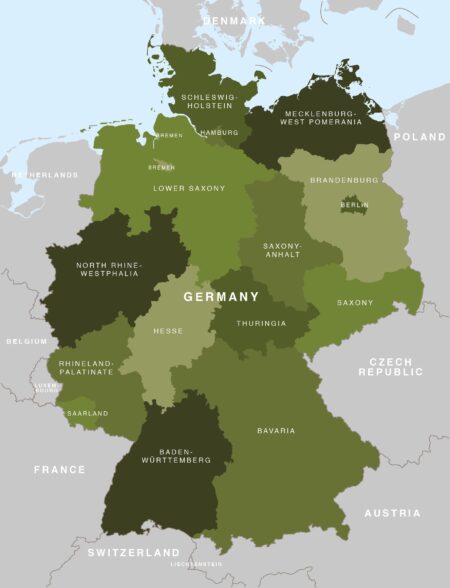The 50+1 rule is a cornerstone of German football, shaping the landscape of club ownership and fan involvement across the Bundesliga and beyond. Designed to preserve the traditional values of supporter influence and prevent outside investors from gaining full control, this regulation has both staunch defenders and vocal critics. As debates intensify over its impact on competitiveness and financial growth, understanding the origins, mechanics, and controversies of the 50+1 rule is essential for anyone interested in the future of German football. This article provides a comprehensive overview of what you need to know about the 50+1 rule, its significance, and its role in one of Europe’s most passionate football cultures.
The Origins and Purpose of the 50 1 Rule in German Football
In the early 1990s, German football faced a critical turning point. With increasing commercialization and the influx of private investors, concerns grew about preserving the integrity and fan culture around clubs. The 50+1 rule was introduced as a response, ensuring that club members-typically fans and local stakeholders-retain majority voting rights over external investors. This safeguard was designed to prevent any single entity from gaining disproportionate control, thus maintaining a democratic structure within German football clubs.
Key objectives of the rule include:
- Protecting club traditions and values from commercial exploitation
- Ensuring fans have a decisive voice in club affairs
- Preventing alienation of local communities from their teams
- Maintaining competitive balance across the Bundesliga
| Year Introduced | Main Purpose | Impact |
|---|---|---|
| 1998 | Majority control by club members | Clubs remain fan-led |
| Ensures financial stability | Prevents dominant investor control | Encourages sustainable management |
How the 50 1 Rule Shapes Club Ownership and Fan Influence
At the core of German football’s unique club structure lies an ownership model designed to preserve fan influence and community values. By mandating that club members must hold at least 50% plus one share of voting rights, the rule effectively prevents external investors from gaining controlling stakes. This model ensures that decisions prioritize the interests of supporters and local communities over purely commercial considerations. Moreover, it fosters transparency and democratic governance, where member voices carry significant weight, making the clubs less vulnerable to the whims of wealthy owners or sudden financial shifts common in other leagues.
Beyond ownership, this system cultivates vibrant fan engagement through active participation in club elections and policymaking. Fans aren’t mere spectators; they are stakeholders with a direct say in the club’s future. The 50+1 rule also encourages long-term stability by curbing speculative investments and promoting sustainable growth. Some of the key impacts include:
- Preservation of club identity: Ensures traditions and local culture remain intact.
- Enhanced financial accountability: Limits risky spending driven by external investors.
- Fan empowerment: Maintains democratic control within the community.
- Competitive balance: Reduces dominance by wealthy owners, promoting parity.
| Aspect | Impact |
|---|---|
| Ownership Control | Majority held by club members |
| Fan Influence | Direct voting rights on major decisions |
| Investor Access | Restricted controlling stakes |
| Club Stability | Long-term planning emphasized |
Challenges and Future Prospects for the 50 1 Rule in a Changing Football Landscape
As the 50+1 rule enters a new era, it faces mounting pressure from both domestic and international forces eager to reshape German football’s ownership landscape. Critics argue that this regulation, which ensures club members hold the majority of voting rights, may limit the influx of crucial investment needed to compete with global football giants. Meanwhile, proponents maintain that preserving fan influence is essential to safeguard club identities and prevent the risks associated with unrestricted commercialization. The challenge lies in balancing tradition with innovation as clubs seek to modernize without sacrificing democratic decision-making processes. Emerging cases of partial exemptions, such as those granted to clubs with long-standing private investors, further complicate the future application of the rule.
Looking ahead, the sustainability of the 50+1 model will depend largely on adaptability and compromise. Several Bundesliga clubs are exploring hybrid models that allow for increased external funding while maintaining member control through enhanced governance frameworks. The integration of technology-driven fan engagement platforms also promises to revolutionize participation, potentially making the rule’s democratic spirit more dynamic and inclusive. Below is a concise overview of potential developments that could influence the rule’s trajectory in the coming years:
| Potential Development | Possible Impact |
|---|---|
| Regulatory Flexibility | Allows tailored investor involvement per club |
| Fan Digital Voting Platforms | Broader, real-time member participation |
| International Investment Partnerships | Enhanced financial power without ownership loss |
| Legal Challenges | Possible recalibration of ownership rules |
In Retrospect
As the debate around ownership models in football continues to evolve, the 50+1 rule remains a defining feature of the German game. By ensuring that club members retain majority control, it aims to preserve traditional values and fan influence, setting German football apart on the global stage. However, challenges and calls for reform highlight the delicate balance between maintaining community ties and securing financial competitiveness. Understanding the nuances of the 50+1 rule is essential for anyone looking to grasp the unique dynamics of German football today.



